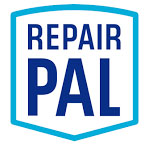Giving CV Joints the Boot! (CV Joint and Boot Replacement)
Posted October 29, 2023 8:31 AMEver wonder how your vehicle’s transmission is connected to your wheels? After all, when you hit a pothole or some other uneven part of a road’s surface, there has to be something that can maintain the connection between the transmission and the wheel yet keep everything moving at the same speed.
That very cool device is called a CV joint, a kind of driveshaft running to each wheel. The CV stands for constant velocity because it keeps the drive wheels moving at a constant speed (velocity). They’re used mostly on front-wheel drive vehicles but also in rear-wheel and all-wheel drive vehicles.
The joints move up and down and adjust to bumpy surfaces. Plus, they are covered in a rubber boot which protects them from road debris and also holds lubrication in. There’s a CV joint and boot on the transmission side and one on the wheel side. Unfortunately, the spot that usually fails first is that rubber protective cover (the boot). After a lot of wear, tear, bumps, road hazards, heat, and you name it, the rubber rips and the lubrication leaks out. At that point, it must be replaced.
Here are signs to tell if your CV joint is bad.
- Your vehicle is pulling to one side as a wheel loses power or you feel a vibration while driving.
- You see grease on the inside or edge of your tires.
- Your front tires won’t point in the same direction.
- You hear grinding or clicking when you turn.
Sometimes if a broken boot early is caught early, a technician can pack in new grease and replace just the boot. But if the lubrication has leaked out and the joint is already wearing badly, the CV and boot both have to be replaced. Give your vehicle the boot (as in a new boot) and CV joint, and you’ll be back on the road to your next destination.
Triple A Automotive
972 Barstow Suite B
Clovis, CA 93612
(559) 299-9300
http://www.tripleaautomotive.com











